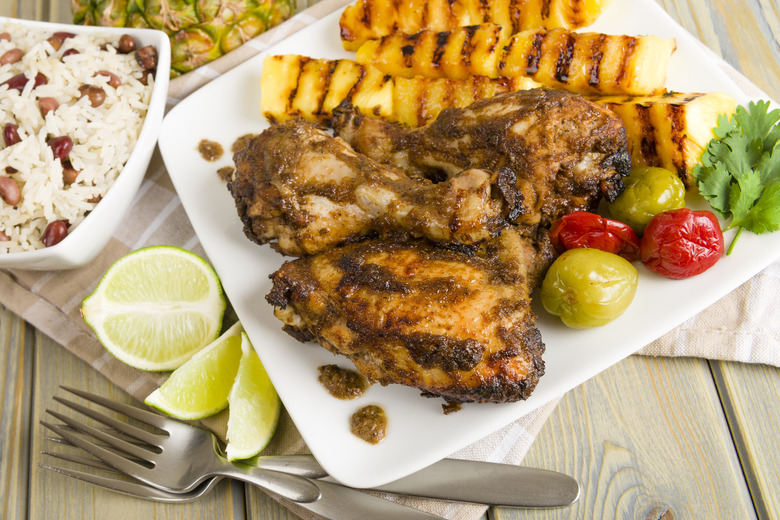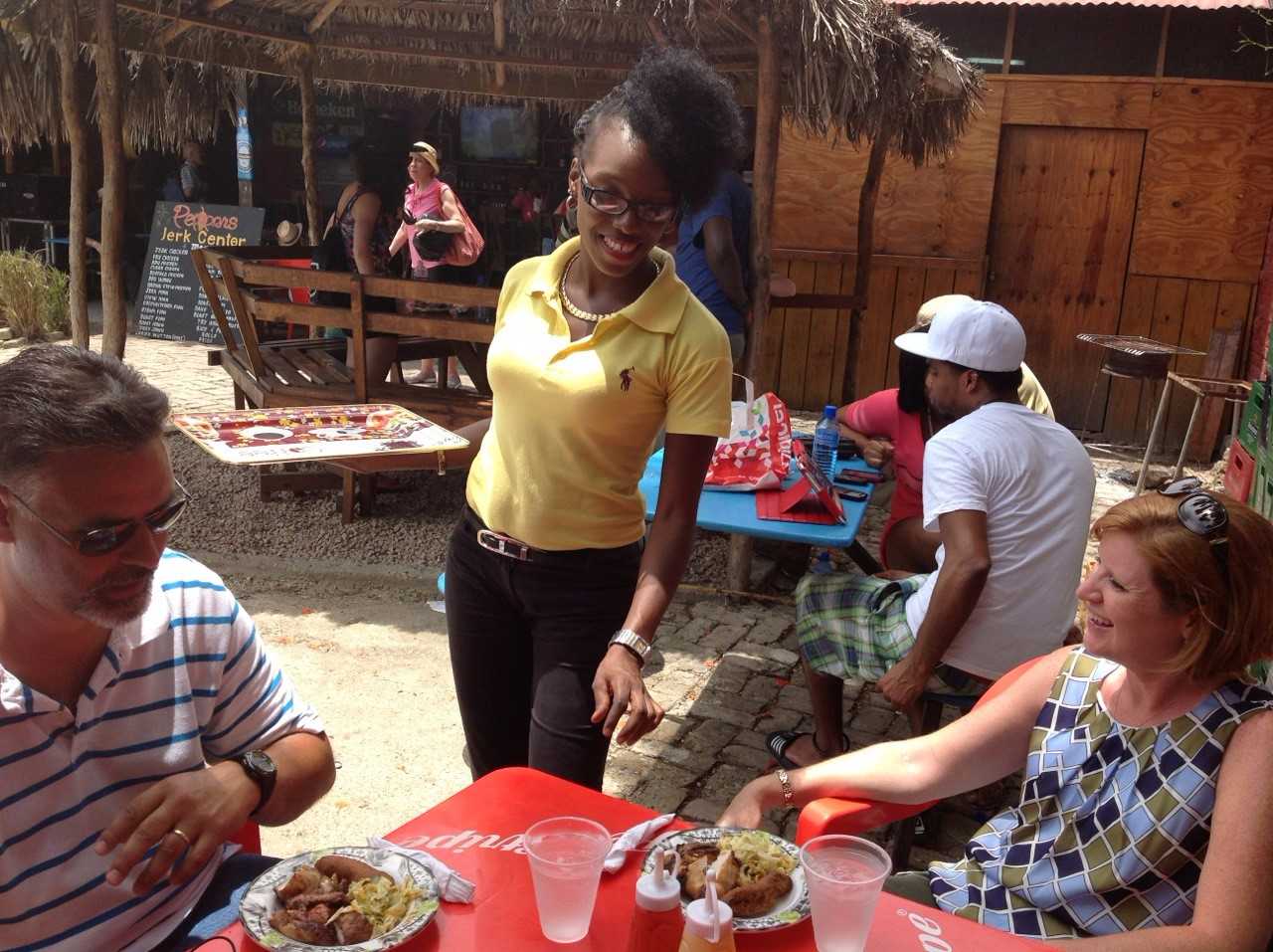A Culinary Walk Through The Jamaican Town Of Falmouth Reveals History, Culture, And Flavor
The Falmouth Food Tour, offered by Jamaica Culinary Tours ("A Taste of History") in collaboration with Falmouth Heritage Walks, is hands down one of the best such tours I have ever been on — high praise indeed, as I have been on many walking tours over the years.
It must have been difficult to hold the attention of a group of random strangers for two-and-a-half hours in the searing heat, through the jam-packed streets of the historic port town of Falmouth, between Ocho Rios and Montego Bay on Jamaica's northern coast, but our guide, Sanya Hall, did a wonderful job. She obviously knows and loves her city. Along the way, she was constantly waving, chatting, and flirting with the locals. If there is anyone you want to hang out with in Falmouth, it is this lady.
Jamaica Culinary Tours was established in November 2013 with the launch of the Falmouth Food Tour, the first such culinary walk in Jamaica. The company is the brainchild of two sisters, Janet and Anne Crick, who combined their passions for Jamaican history, culture, and food to develop an itinerary that presents an authentic story of the Jamaican people through the intriguing melting pot of the island's culinary history.
"We started a food tour company because we loved taking food tours in other towns and cities and realized that no one was doing one in Jamaica," says Janet, "even though we have one of the world's greatest cuisines! We saw an opportunity to create unique experiences that would appeal to the curiosity of the discerning visitor, take them off the beaten track, and introduce them to the 'real Jamaica.' Guests are transported back to an era when sugar was king, where they peek into the lives of the slaves and the plantation owners, and learn how the life and rhythm of the sugar plantation shaped the culinary traditions of our people, which have passed down through the centuries to influence modern day cuisine."
Participants enjoy five food and beverage tastings as they stroll through the town, visiting local food kiosks and viewing Falmouth's renowned Georgian architecture. Janet adds that the tour has received a Trip Advisor Certificate of Excellence for 2014 and 2015, thanks to consistent five-star review ratings from customers, who are "delighted at the authentic experience which allows them to interact directly with the local people and culture."
She offers some background: "Founded in 1769, Falmouth was once considered the richest city in the entire hemisphere, its wealth coming primarily from the profits of sugar and its by-products, rum and molasses. The evidence of the town's prosperity was reflected in its architecture, as Falmouth proudly boasts some of the finest collection of Georgian architecture in the Caribbean."
As for the food, she likes to say that it is "a lot like our Jamaican people — mixed up, spicy, and fascinating! Our motto is 'Out of Many, One People,' and our food reflects that. It has influences from the Taino Indians, the original inhabitants of the island, and from Europe, Africa, and Asia. We have borrowed and adapted dishes from these various cultures, so for example, the English tradition of hot cross buns at Eastertime has become a rich loaf-shaped bun, packed with fruits, honey, or molasses — and in our local version eaten with cheese. Similarly, the popular escoveitched fish is believed to be an adaptation of the Spanish ceviche, the difference being that our fish is cooked before being put to soak in the spicy vinegar-based marinade. [In fact, ceviche isn't Spanish, and though the term might share a common etymology, Jamaica's escoveitch is actually related to Spain's escabeche, which is cooked first.] Needless to say, the African influence from the slaves brought from West Africa is very strongly featured in our food."
The items covered on the tour are subject to change, but among the highlights and favorites are the coconut, the Jamaican patty, and jerk.
"The coconut has a multitude of uses and is a common feature in the Jamaican daily diet in one form or other," Janet says. "Many Jamaicans make a stop by the 'jelly man' on their way to and from work or in between their errands for a refreshing drink of coconut water. The coconut water is said to 'wash de heart,' because of its numerous nutritional benefits. It is packed with vitamins, minerals, and nutrients and high in potassium, calcium, and chloride making it a perfect natural energy drink. The high potassium content makes it good for reducing the risk of hypertension and strokes, and the water is also good for clearing up various skin conditions."
"Once they've downed the coconut water and quenched their thirst, most people will turn their attention to the jelly — the white meat inside the coconut which varies in consistency from mushy to firm depending on the maturity of the coconut. The dried coconut provides the hardened white meat which is used widely in soups, stews, and even drinks. The grated white meat forms the base for several favorite deserts and condiments.
"The patty is believed to be an adaptation of the English Cornish pasty, a meat pie, or an adaptation of the Spanish empanada, the difference being that the empanada is often fried, whereas the Jamaican patty is baked.
"The tradition of jerk is believed to have come down to us from the Maroons, the slaves who escaped from the plantations and fled into the hills. As they often found themselves on the run for several days at a time, fleeing from the British soldiers and plantation owners, it is said that they developed a spicy rub that effectively preserved their meat. A second theory is that the Maroons avoided cooking above ground so that the telltale signs of the smoke would not give away their location to the British. They therefore developed the tradition of cooking meat below the ground. In modern day Jamaica, the meat is not jerked below the ground, but usually on wood or coals covered over by zinc [a galvanized zinc sheet] to give it that flavour. Jerk did not become popular in modern-day Jamaican cuisine until some 50 years after the emancipation of the slaves, when the Maroons started venturing out of their communities in the hills and sharing the tradition in the new communities into which they settled."
When asked what the best part of her job is, Janet replies without hesitation, "I love interacting with the guests and watching their reaction as they taste the different dishes — and sharing insights into my country, history, and culture with others, and being a part of an experience that allows them to walk away with a much deeper appreciation for Jamaica than when they arrived."
Love the idea of going on a food tour, but looking for something a bit closer to home? Here are 9 fantastic food tours you can go on before summer is over — or even after.

